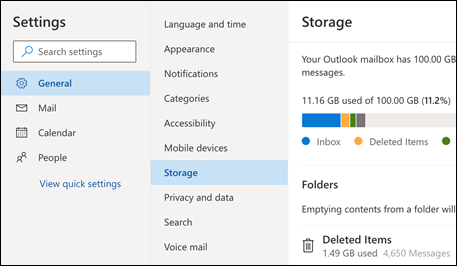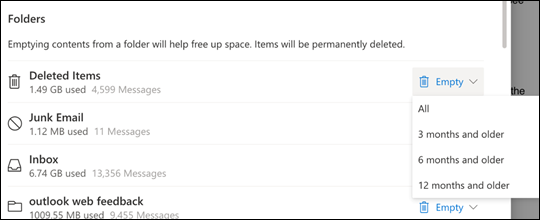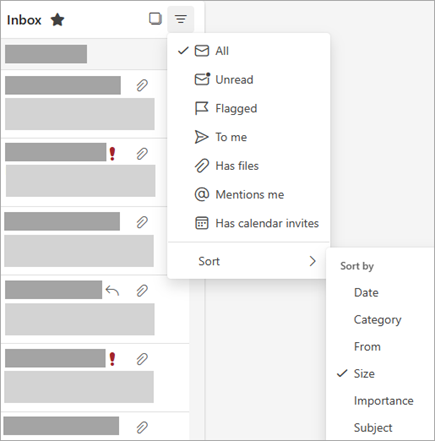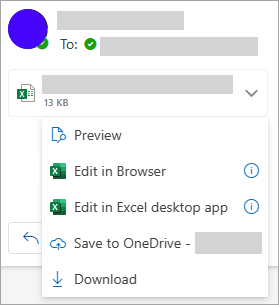Note: This support article is only applicable if you sign in with a work or school account.
Outlook accounts can have up to 100GB of storage per mailbox (Exchange Online mailbox storage limits). Administrators can reduce maximum mailbox sizes per user or globally, see: How to set Exchange Online mailbox sizes and limits in the Microsoft 365 environment for details.
"Quota Exceeded, your account is above quota limits"
If your mailbox is nearing its maximum capacity, we will begin sending you emails and in-app messages telling you your storage is almost full. If it does exceed capacity, you won't be able to send or receive any messages. Also, people who send you email will receive an error message that tells you your mailbox is full.
To see how much mailbox storage you've used and quickly clear up space:
-
At the top of the page, select Settings

For New Outlook for Windows:
To see how much mailbox storage you've used and quickly clear up space:
-
At the top of the page, select Settings

Clean up Mailbox
From the Settings > Storage page you should see a breakdown of how much space each folder in your mailbox is taking. Below, you should see a list of the folders represented in the breakdown with the option to permanently delete all items (or those older than 3, 6, or 12 months) in these folders to free up space.


How to permanently delete email
When deleting items from Inbox or other folders, items are sent to the Deleted Items folder by default. The Deleted Items folder does count against your mailbox storage quota until it is manually emptied.
To permanently delete a message or messages, select or highlight the messages, press Shift and DEL on your keyboard.
Other ways to reduce your storage
To make room in your mailbox, try the following solutions.
Use the Sweep button to quickly remove unwanted email from your inbox or archive folders. Sweep lets you automatically delete all incoming email from a particular sender, keep only the latest message from that sender, or delete email that's older than 10 days.
To sweep your inbox, choose a message you want to sweep, and select Sweep.

To learn more about Sweep, see Organize your inbox with Archive, Sweep, and other tools in Outlook.com.
Important: Items deleted using Sweep will not count toward reducing your storage quota until they are also deleted from the Deleted Items folder.
-
At the top of your message list, select Filter > Sort by > Size.

Note: If the message list sorts the smallest messages on top, click Filter > Sort by > Size again to put the largest messages on top.
-
Select the message containing the attachments you want to upload to OneDrive.
-
Beneath the attachment, select Save to OneDrive.

-
Permanently delete the original email that contained the attachment by pressing Shift and DEL on your keyboard.
To delete the file or image, you must delete the message it's attached to:
-
For All images, find the corresponding message in your mailbox and delete it.
-
For Sent images, go to your Outlook.com Sent Items, find the corresponding message, then delete it.
-
After deleting the message, you also need to delete it from your Deleted Items folder. Go to Deleted Items, select the item or items to remove, then select Delete.
How else can I increase sending and storage limits
If you are still unable to make enough space using the above methods you can try the following:
-
Move items to your archive mailbox.
-
Reach out to your IT admin and ask for them to provision you more space (see Exchange Online mailbox storage limits and How to set Exchange Online mailbox sizes and limits in the Microsoft 365 environment for details).










